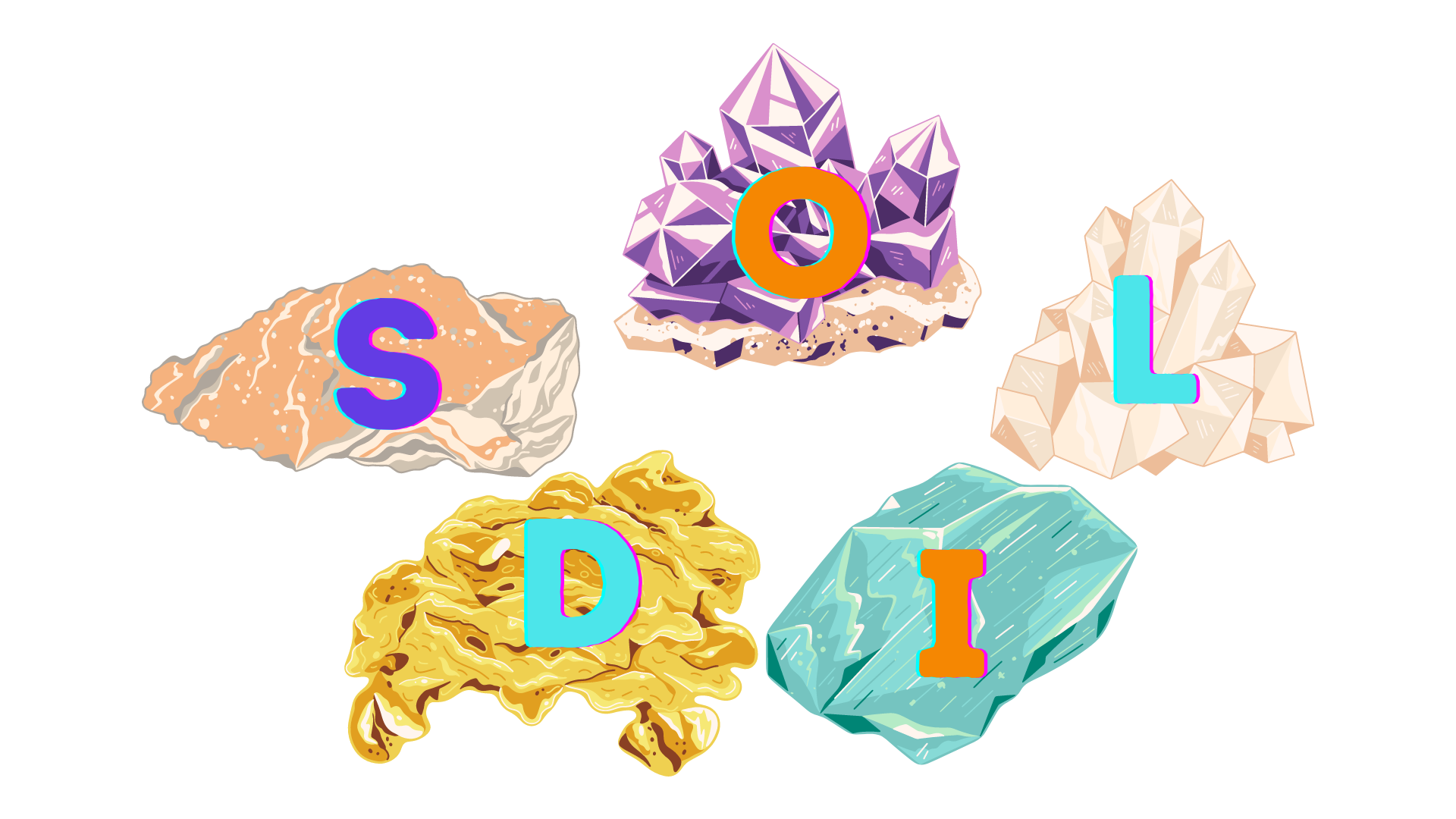Cursos relacionados
Ver Todos os CursosInterface vs Abstract Class
Unraveling the Mysteries of Object-Oriented Programming Structures

In the domain of object-oriented programming (OOP), interfaces and abstract classes are foundational pillars that enable developers to design robust, scalable, and maintainable software systems. While both entities share the common goal of defining capabilities for classes, they do so in markedly different ways, serving distinct purposes within the OOP paradigm. This article aims to dissect these structures meticulously, shedding light on their characteristics, applications, and strategic selection for various programming scenarios.
Delving into Interfaces
An interface is akin to a blueprint in OOP. It delineates a set of methods that a class must implement, thereby specifying a contract that the implementing class agrees to fulfill. Interfaces are instrumental in decoupling the definition of tasks from their execution, promoting a high degree of modularity and flexibility in software design.
Run Code from Your Browser - No Installation Required

Core Attributes of Interfaces
- Contract-Driven Design: Interfaces are pure declarations without any hint of implementation. They encapsulate what actions an object can perform without dictating how those actions are executed. This abstraction allows different classes to offer diverse implementations of the same interface, fostering polymorphism.
- Multiple Implementations Per Class: A unique advantage of interfaces is their support for a class to adhere to multiple contracts simultaneously, enabling it to inherit behaviors from various sources. This feature is particularly beneficial in languages that do not support multiple inheritances directly, as it allows classes to exhibit a form of polymorphism without the complexity of multiple class hierarchies.
Exploring Abstract Classes
In contrast, an abstract class serves as a partial blueprint for other classes. It can encapsulate a mix of fully implemented (concrete) methods and abstract methods (with no body), providing a skeletal framework that other classes can extend and flesh out. Abstract classes are a halfway house between full abstraction and concrete implementation, offering a shared foundation upon which subclasses can build.
Distinctive Features of Abstract Classes
- Combination of Abstraction and Implementation: Abstract classes stand out by allowing both abstract method declarations and concrete method implementations. This duality enables them to serve as a common groundwork that encapsulates shared logic for subclasses, reducing code duplication.
- Single Inheritance Constraint: A notable limitation of abstract classes is that a class can extend only one abstract class. This restriction ensures a clear and linear class hierarchy, simplifying the inheritance structure but also limiting flexibility compared to interfaces.
Start Learning Coding today and boost your Career Potential

Interfaces vs Abstract Classes: A Comparative Analysis
Understanding when to use interfaces or abstract classes is pivotal for effective OOP design. Here’s a more detailed comparison to guide this decision:
- Purpose and Use Cases: The choice between an interface and an abstract class often hinges on the design intention. Use interfaces when you need to establish a contract across a broad range of unrelated classes, ensuring they all adhere to a specific protocol. Conversely, abstract classes are ideal when you're creating a closely related family of classes that should share common behavior or when you need to provide some default implementations while leaving other methods abstract.
- Flexibility vs. Structure: Interfaces offer unparalleled flexibility, allowing classes to implement multiple interfaces and thus inherit behaviors from multiple sources. This flexibility can be a double-edged sword, potentially leading to complex and fragmented designs if not managed carefully. Abstract classes, while more restrictive due to the single inheritance rule, provide a more structured and controlled way of sharing implementation logic among subclasses, making them a better choice for establishing a clear hierarchy and shared behaviors.
Practical Application and Decision Making
When deciding between an interface and an abstract class, consider the long-term design implications and how your choice aligns with the principles of clean and maintainable code. For example, if you anticipate that the core functionality of your classes will evolve over time, an interface might be preferable due to its flexibility and the ease with which you can introduce new behaviors. However, if your classes share a significant amount of code and you wish to minimize redundancy, an abstract class would be more appropriate.
Consider the following enhanced example to illustrate the practical use of interfaces and abstract classes:
interface Drivable {
void accelerate();
void brake();
}
abstract class Vehicle implements Drivable {
public void brake() {
System.out.println("Generic braking mechanism");
}
// Abstract method to be implemented by subclasses
abstract void fuelType();
}
class ElectricCar extends Vehicle {
@Override
public void accelerate() {
System.out.println("Electric car accelerating");
}
@Override
void fuelType() {
System.out.println("Uses electricity");
}
}
In this scenario, the Drivable interface defines the contract for acceleration and braking. The Vehicle abstract class implements Drivable, providing a default implementation for brake while leaving accelerate and fuelType as abstract methods. The ElectricCar class then extends Vehicle, offering specific implementations for these methods. This structure demonstrates the complementary nature of interfaces and abstract classes, allowing for both flexible contract definition and code reuse.
FAQS
Q: Can abstract classes only contain abstract methods, making them similar to interfaces?
A: While abstract classes can technically contain only abstract methods, doing so would neglect their primary advantage of supporting partial implementations. If a class does not require shared concrete methods, an interface might be a more suitable choice.
Q: How do default methods in interfaces influence their usage?
A: Default methods in interfaces allow developers to add new methods to interfaces without breaking existing implementations, providing a way to evolve interfaces over time. However, they should be used judiciously to avoid complicating the interface’s contract.
Q: Is it possible for an abstract class to implement an interface?
A: Yes, an abstract class can implement an interface, and it doesn't need to provide an implementation for all of the interface's methods. This allows the abstract class to define a partial interface implementation, leaving the responsibility of implementing the remaining methods to its subclasses.
Q: Can an interface inherit from multiple interfaces?
A: Yes, an interface can extend multiple other interfaces, allowing it to combine multiple contracts into a single interface. This capability further enhances the flexibility and modularity of interface-based designs.
Q: What is the impact of choosing an interface over an abstract class, or vice versa, on testing and mocking?
A: Interfaces can make mocking and testing easier, as they allow for the creation of mock objects that implement the interface without the need for a concrete class. Abstract classes can also be mocked, but this might require more effort if the abstract class includes concrete method implementations that need to be accounted for in the test setup.
Cursos relacionados
Ver Todos os CursosThe SOLID Principles in Software Development
The SOLID Principles Overview
by Anastasiia Tsurkan
Backend Developer
Nov, 2023・4 min read

30 Python Project Ideas for Beginners
Python Project Ideas
by Anastasiia Tsurkan
Backend Developer
Nov, 2023・5 min read

Coding for Beginners The Ultimate Guide on How to Start
Road map for beginer
by Anastasiia Tsurkan
Backend Developer
Nov, 2023・10 min read

Conteúdo deste artigo